Title of the work
Studio / Production Company
Country of the First Edition
Country/countries of popularity
Original Language
First Edition Date
First Edition Details
Kid Icarus (1986): First released on December 19, 1986 in Japan, followed by Europe on February 15, 1987 and North America in July 1987 for the Nintendo Entertainment System (NES)/ Nintendo Famicom (Japan Only).
The game was re-released for the Gameboy Advance as part of the “3D Classics” collection. The game was also added to the Nintendo Virtual Console Store, making it available on the Wii in 2007, then on the Wii U and 3DS in 2013. It was also one of the 30 built-in games included in the Nintendo Entertainment System (NES) Classic Edition, released in 2016.
A 5-minute demo of the game was also included in Super Smash Bros. Brawl (2008) on the Nintendo Wii.
Kid Icarus: Of Myths and Monsters (1991): North America were the first to receive the Nintendo Game Boy game on November 5, 1991, followed by Europe on May 21, 1992. Japan, however, only received this game on February 8, 2012 when it was released worldwide through the 3DS Virtual Console. Due to this, it is often not considered to be part of the series.
Kid Icarus: Uprising (2012): The idea for Kid Icarus: Uprising was first thought of after Pit heavily featured in Super Smash Bros. Brawl (2008) for the Nintendo Wii as a playable character. This re-ignited the public’s interest in the series as the first part of the single player campaign in Super Smash Bros. Brawl begins with elements from the Kid Icarus series. The Kid Icarus: Uprising game itself was released for the Nintendo 3DS in Japan on March 22, 2012, in North America and Europe on March 23, 2012, and in Australia on March 29, 2012.
Running time
Platform
Official Website
nintendo.com (accessed: August 20, 2018);
www.nintendo.com (accessed: August 20, 2018);
kidicarus.nintendo.com (accessed: August 20, 2018).
Available Onllne
Kid Icarus: youtube.com (accessed: August 20, 2018);
Kid Icarus: Of Myths and Monsters: nintendo.com (accessed: August 20, 2018);
Kid Icarus: Uprising: youtube.com (accessed: August 20, 2018).
Awards
2012 – Video Game Music Online, “Best Score award in the Eastern Category”
Genre
Platform*
Target Audience
Crossover (Anyone over the ages of 7 for Kid Icarus and Kid Icarus: Of Myths and Monsters. For Kid Icarus: Uprising, it is aimed at children and young adults over the age of 12.)
Cover
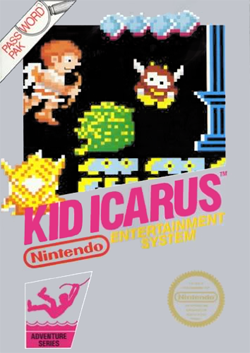
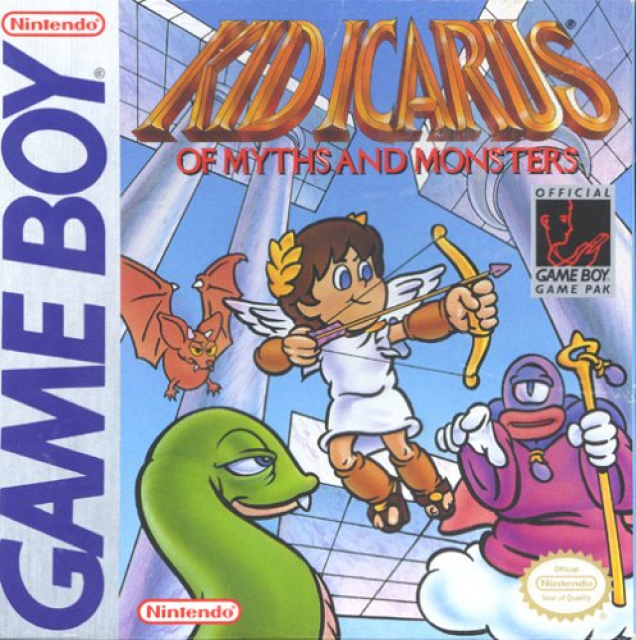
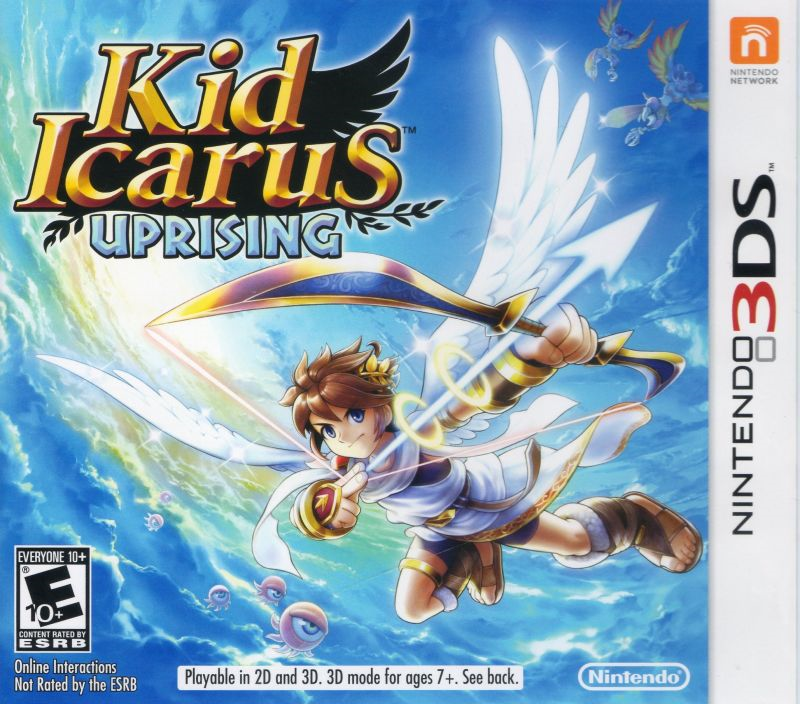
Kid Icarus (1989). Used under Creative Commons License (accessed: May 24, 2018).
Kid Icarus: Of Myths and Monsters (1991). Used under Creative Commons License (accessed: May 24, 2018).
Kid Icarus: Uprising (2012). Used under Creative Commons License (accessed: May 24, 2018).
Author of the Entry:
Nanci Santos, University of Roehampton, nancisantos@hotmail.co.uk
Peer-reviewer of the Entry:
Susan Deacy, University of Roehampton, s.deacy@roehampton.ac.uk
Elżbieta Olechowska, University of Warsaw, elzbieta.olechowska@gmail.com

Logo used during Nintendo R&D1's existence. Retrieved from Wikipedia Commons, public domain (accessed: December 8, 2021).
Nintendo Research and Development Team 1 (Company)
Nintendo is a Japanese video games company, which also make consoles. Within the company there are development teams who create various titles under the Nintendo brand. The Research and Development Team 1, in particular, created and oversaw games such as Tetris, Mario Bros, and Donkey Kong. Specifically, the team who worked on the series Metroid, including Sakamoto, later worked on the Kid Icarus NES game.
Prepared by Nanci Santos, University of Roehampton, nancisantos@hotmail.co.uk

Project Sora logo, used under Creative Commons License (accessed: July 6, 2018).
Project Sora (Production Company)
Project SORA (2009-2012), based in Tokyo and created in 2009, is a division of video game developers Sora Ltd. It was founded by Masahiro Sakurai and Satoru Iwata solely for the purpose of developing the game Kid Icarus: Uprising, closing (accessed: July 6, 2018) not long after the game was released in 2012.
Prepared by Nanci Santos, University of Roehampton, nancisantos@hotmail.co.uk
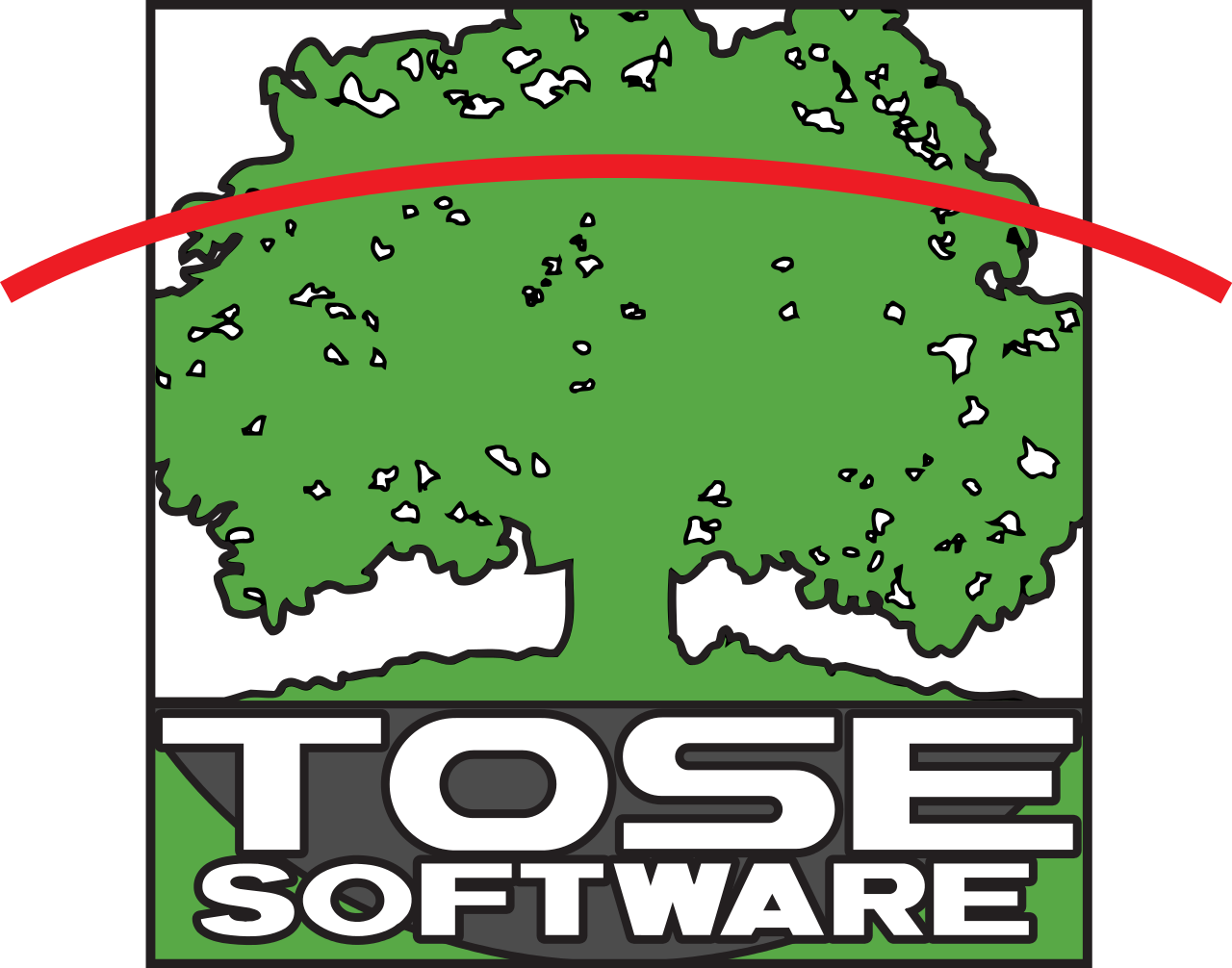
TOSE Software logo, used under Creative Commons License (accessed: July 6, 2018).
TOSE Software (Company)
Together with Research and Development Team 1, Kid Icarus: Of Myths and Monsters was developed by TOSE, who are known for being “behind the scenes” of several video games (see here, accessed: July 6, 2018). TOSE Software (1979) are a Japanese video games development company based in Kyoto. They are one of the main developers of video games for Nintendo consoles, including the newly-released Nintendo Switch, as well as having self-published PlayStation and Arcade titles, such as Resident Evil Survivor in 2000 for the PlayStation 1 (see here, accessed: July 6, 2018).
Prepared by Nanci Santos, University of Roehampton, nancisantos@hotmail.co.uk
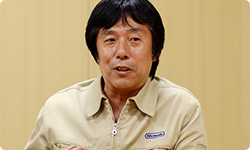
Toru Osawa. Used under Creative Commons License (accessed: May 24, 2018).
Toru Osawa
, b. 1962
(Author)
Toru Osawa, born in Kyoto on December 27, 1962, graduated from Kyoto Seika University with a BA from the Faculty of Visual Design. He began working for Nintendo in 1985 as a Developer, since then he has worked on video games such as Metroid, Fire Emblem, Balloon Kid, and The Legend of Zelda: Ocarina of Time (see here, accessed: June 26, 2018). According to Did You Know Gaming: Kid Icarus Uprising, Osawa decided to create a video game inspired by Greek Mythology due to his interest in the subject (see here, 2:40, accessed: June 26, 2018).
Bio prepared by Nanci Santos, University of Roehampton, nancisantos@hotmail.co.uk

Masafumi Sakashita (Author)
Masafumi Sakashita was the designer of Kid Icarus: Of Myths and Monsters. Having graduated from university, he joined Nintendo in 1986 as a graphic artist for the Research and Development 1 Division. There, he designed Metroid II: Return of Samus (1991) and contributed to the development of Famicon Tantei Club: Kieta Kokeisha (1988) (see here, accessed: June 28, 2018), in addition to other Nintendo games in the ‘90s. He left his position in 1996.
Bio prepared by Nanci Santos, University of Roehampton, nancisantos@hotmail.co.uk
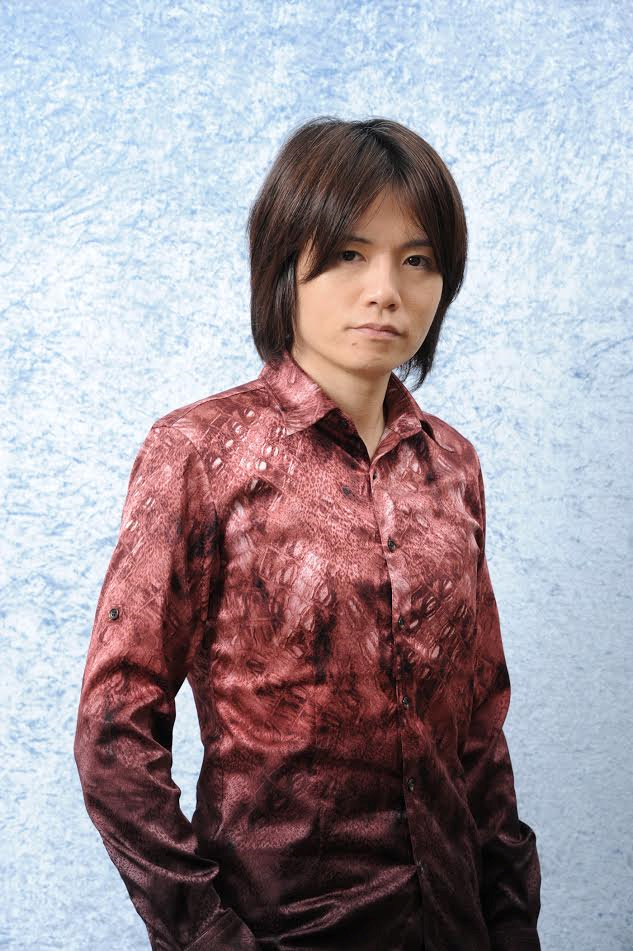
Masahiro Sakurai. Used under Creative Commons License (accessed: May 24, 2018).
Masahiro Sakurai
, b. 1970
(Author)
Masahiro Sakurai, born on August 3, 1970 in Tokyo, Japan, was the director and creator of Kid Icarus: Uprising. He began his career in his late teens working for HAL Laboratory, where he created and directed the highly popular Kirby’s Dream Land (1992) for the Nintendo Game Boy. Also, whilst at HAL Laboratory, he also directed Kirby’s Adventure (1993) for the Nintendo Entertainment System (NES) and Kirby Super Star (1996) for the Super Nintendo Entertainment System (SNES). Whilst still working for HAL Laboratory, Masahiro noted a gap in the market for fighting games on home consoles and began working, unofficially at first, on what later became Super Smash Bros. (1999) for the Nintendo 64, one of Nintendo’s biggest series of games (see here, accessed: June 25, 2018). On August 5, 2003, Masahiro left HAL Laboratory, later joining Q Entertainment, where he created the puzzle game Meteos (2005) for the Nintendo DS. In 2005, he created his own company named Sora Ltd, based in Tokyo, where he has since developed all of the Super Smash Bros. games. In 2008, he was approached by Satoru Iwata (1959 – 2015), president of Nintendo at the time, who wanted to create a game for Nintendo’s new handheld console (see here, accessed: June 25, 2018). Masahiro wanted to incorporate flying mechanics and both agreed that Pit and Kid Icarus would be a perfect match (see here, accessed: June 25, 2018). He is still working on various other games for Nintendo, however, at a much slower pace after being diagnosed with calcific tendinitis.
Bio prepared by Nanci Santos, University of Roehampton, nancisantos@hotmail.co.uk
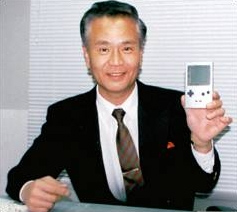
Gunpei Yokoi. Used under Creative Commons License (accessed: May 24, 2018).
Gunpei Yokoi
, 1941 - 1997
(Producer)
Gunpei Yokoi worked on Kid Icarus (1989) and Kid Icarus: Of Myths and Monsters (1991) as a producer, under Nintendo’s Research and Development Team 1. He was born in Kyoto on September 10, 1941 and later attended Doshina University, where he gained a degree in electronics. He began working for Nintendo in 1965, taking up several roles including janitor and assembly line worker. However, he began working on toys in his spare time and was noticed by Nintendo’s president Hiroshi Yamauchi (see here, accessed: May 24, 2018). He went on to invent several famous Nintendo products such as the Game & Watch and Game Boy. He also created the Metroid series and Mario Land for the Game Boy. Gunpei resigned from Nintendo in 1996, forming Koto Laboratories later that year. He tragically died in 4th October 1997, following a traffic accident (accessed: May 24, 2018).
Bio prepared by Nanci Santos, University of Roehampton, nancisantos@hotmail.co.uk
Sequels, Prequels and Spin-offs
- Super Smash Bros. Brawl.
- Super Smash Bros. Wii U/3DS.
- Kid Icarus 3D Anime.
Summary
Kid Icarus
The story begins in a land called “Angel Land” where humans and deities live in harmony. Two goddesses rule the land: Palutena, goddess of light and Medusa, goddess of darkness. The goddess of light liked the humans and helped them flourish, but the goddess of darkness hated them, so dried up their crops and turned them into stone. Palutena transformed Medusa into a monster and banished her to the underworld. Once there, Medusa gathered monsters and demons and assembled an army. She decided to overthrow Palutena, and a great war between the two broke out. After winning the war, Medusa imprisoned Palutena in her palace and turned her army to stone. Medusa also stole the three sacred treasures: the mirror shield, the arrows of light and the wings of Pegasus. The monsters took over Angel Land and turned it into a land of Darkness, ruled by Medusa. Palutena used her last strength to summon Pit, the head of Palutena’s bodyguards, who had been imprisoned in the underworld. He used his bow and arrow to break free after the guarding of the underworld became weak. He fought his way to the Sky Palace, collecting the sacred treasures, and ultimately defeating Medusa, freeing Palutena and Angel Land from Darkness.
Kid Icarus: Of Myths and Monsters
In Kid Icarus: Of Myths and Monsters the story begins in a similar way to the first Kid Icarus. There is a place called Angel Land, founded by Palutena, where humans and gods lived in harmony. The story then differs as Palutena is told by a “sooth-sawyer” of tragedies that are to come, when the “Orcos” arrives. So, Palutena summons Pit, the leader of the Icarus Army and her personal bodyguard. She tells him about the prophecy and asks for his help, entrusting him with the safety of Angel Land.
Palutena proceeds to explain that in order to defeat the “Orcos”, Pit will need the three sacred treasures, however, she deems it necessary to train him first to be able to use the treasures. To do this training, Pit and Palutena decide that it is best for him to first go to the underworld, then, proceed to the overworld and finally come to the Skyworld. Whilst he is away, she places each part of the treasure in a fortress to keep them safe. Pit successfully obtains the treasures and manages to defeat the Orcos, saving Angel Land from destruction.
Kid Icarus: Uprising
In Kid Icarus: Uprising, Medusa returns, 25 years after the last time (Kid Icarus, 1989), and she attempts to destroy Pit, Palutena, and all of humanity. Pit is called to stop Medusa and her underground army, which include enemies from the previous games. However, before he defeats the final boss, Pandora clones Pit, using the mirror of truth, creating a Dark Pit, who is supposed to help Medusa’s army but instead turns away from both sides. Due to this, Palutena turns her focus back towards defeating Medusa. Pit proceeds to fight Thanatos, retrieves the key to the underworld and then goes to retrieve the sacred treasures from the space pirates who stole them from the constellations in which they were hidden. After defeating the Kraken and obtaining the treasures, Pit proceeds to fight Medusa. However, after defeating her, Pit realises the real enemy was Hades, ruler of the underworld. Hades tricks humans into believing the wish seed was stolen and this causes a great war to break between humans. Pit begins killing off the underworld army to stop them from harvesting the human souls, however part of humanity is destroyed when Viridi, the goddess of nature, uses a reset bomb because she grew tired of humanity’s selfishness. Pit now has to fight Viridi’s army, formed by the forces of nature. The fight gets underway, however Viridi soon begins to fight Hades, and this gives Pit a chance to stop the second reset bomb. Pit must now take down both Hades and Viridi to stop chaos. First, he takes down Phosphora, the leader of Viridi’s army and as he is about to take down all of Hades’ revived commanders once again, mysterious objects appear in the sky. This is when Aurum, an alien species, decide to intervene as this is the best time to destroy Earth and harvest its resources. Hades, Viridi and Pit unite to defeat this new enemy. Pyrrhon, the sun god, joins the fight, however, he soon betrays the team and joins the Aurum. He is defeated but this fight causes Pit to black out, then wake up three years later to find his soul trapped in a ring and Earth in chaos. With the help of Magnus, a human champion he met earlier in the game, Pit finds his body and attempts to make contact with Palutena. However, Viridi answers instead and explains that Palutena has been possessed by Chaos Kin, which has made her evil. With the help of Viridi, Pit retrieves the lighting chariot from the chariot master and uses it to break the force field around Palutena. He finds Palutena and defeats Chaos Kin, however, Chaos Kin takes Palutena’s soul away with him into the Chaos Vortex. Pit unites with Dark Pit and together they save Palutena. In the aftermath, Dark Pit gets pushed and falls into the sky. Pit rushes after him but by saving him, he is left in a critical state. Dark Pit proceeds to go to the underworld to save Pit. He brings Pit’s body to the revival spring with the help of Palutena. This regenerates Pit’s wings to their original state and he equips himself with the three sacred treasures in order to take down Hades, who is still causing chaos. However, Hades destroys the treasures, so Pit is forced to look for a new way to defeat Hades. He meets Dyntos, the god of forge, who creates the Great Sacred Treasure, made of orichalcum. With this new weapon, Pit faces Hades once more and defeats him, with the help of Medusa who had been revived by Hades earlier in the story.
Analysis
The Kid Icarus series was not at the beginning as popular as it is nowadays. Due to issues with its release date coinciding with a game that was more successful at launch, Kid Icarus only became a cult classic much later. It is one of Nintendo’s best-known games, with its characters becoming regular participants in other Nintendo multi-verse games, namely the Super Smash Brothers series.
Storyline and Characters
The Kid Icarus games themselves primarily tell the story of Palutena and Medusa, two goddesses at the opposite ends of the good/evil scale, themed as light and darkness. They fight over humanity as one wishes to help them prosper, but the other wishes to see them destroyed.
It is interesting to note that the story of the games very much resembles the tale of Perseus and Medusa. According to Apollodorus (Library 2.38–46) Perseus seeks Medusa’s head to bring to Polydectes for the wedding of his daughter, Hippodamia. With the help of Hermes and Athena along the way, Perseus must gather the cap of Hades for invisibility, the “Kibisis”, a wallet/bag to put the gorgon’s head in, and the winged sandals. Perseus was also given an adamantine sickle, by Hermes, and a shield with the gorgon’s face on it to protect him from Medusa’s gaze. Later on, in the passage, Apollodorus says that the gorgon’s head is then given to Athena who attached the head to her shield. This parallels the main storylines of the Kid Icarus series as Pit, the personal bodyguard of Palutena, is guided by the goddess to retrieve the three sacred treasures in order to fight and defeat Medusa. The three sacred treasures Pit must obtain are: The Mirror Shield, Wings of Pegasus, and the Arrows of Light (or the silver armour in Kid Icarus: Of Myths and Monsters). Also, part of the plot is the story of Athena turning Medusa into a monster. Despite it being for distinct reasons, Palutena turns Medusa into a monster for causing chaos, whereas Athena does so as punishment for activities carried out by Medusa in Athena’s temple, according to Ovid (Metamorphoses 4.770-803)
This is the main plot followed in the first two games, whilst the latest game’s story is split in two. In the first part you have the main story about Medusa, similar to the other games, but then in the second part, the main story becomes about Hades and other gods/beings which Pit encounters during his journey. Unlike the similarities to Greek mythology in the first part of the game, the second part takes more creative freedom and diverts from its similarities in plot to Greek myths. Nonetheless, it keeps some interesting points for analysis such as the characters which appear in the second part of the game. These are mostly Greek gods, or loosely-based on them.
As mentioned above, Kid Icarus: Uprising has both recurring characters and new characters. As part of the recurring characters, there is Palutena, Medusa, Pit, Twinbellows, Hewdraw, Thanatos, and Pandora. Palutena refers to the goddess Pallas Athena. This can be observed through the similarities in the naming of the character as well as the characters behaviour and actions, as previously discussed.
Medusa, on the other hand, is quite easily identifiable with the Greek mythological gorgon. She is presented as the goddess of darkness who was transformed into a monster by Palutena. Villalobos identifies the fact she is called the goddess of darkness as possibly being associated to the tradition that gorgons live in the West, also known as the world of the dead. Interestingly, Villalobos also points out that when Medusa is assembling an underworld army, this could be compared to the Titanomachy scene present in Hesiod’s Theogony (617-736)*. She appears in all games except for Kid Icarus: Of Myths and Monsters, where the main antagonist is “Orcos”, possibly the Roman counterpart of Hades.
Pit is portrayed as being the head of Palutena’s personal army, and in some games, he is also responsible for the protection of Angel Land. It is, however, interesting to note that despite his actions throughout the game being similar to those of Perseus, Pit is in fact Cupid (or Eros, in Greek Mythology). This can be observed through the fact that in the original, Japanese version, “Pit” is “Pitto” which is the Japanese Katana for Kyupitto, or Cupid**. Pit, also throughout the games retrieves hearts and carries with him a bow and arrow, attributes typically used when depicting Cupid in popular culture***.
Besides the main characters, the four main bosses are also recurring characters. These, too, are loosely-based on Greek Mythology. The first boss Pit typically encounters is Twinbellows. This character is a giant two-headed dog, who is on fire. He is typically found as Pit leaves the underworld levels. It is unclear however, whether this character is meant to depict Orthrus, the creature guarding the sheep of Cyclops, or Cerberus, the commonly depicted three-headed creature, guarding the gates into the underworld. Given the circumstances, however, it is more likely that this is Cerberus, as Twinbellows is found in the underworld.
The next boss enemy Pit encounters is the Hewdraw. As the name suggests, this enemy is based on the Lernaean Hydra. This can be observed as the body of the Hewdraw resembles that of a snake, however, in this version, Hewdraw has only one head (or three heads in Kid Icarus: Uprising), unlike the typical depictions of the hydra which can vary between 9 and 50 heads. He is said to be the gatekeeper of the Overworld.
The Third Boss Pit encounters is Pandora. She first appears as a soul but later in Kid Icarus: Uprising, she recovers her body, turning into Amazon Pandora (or Woman Warrior Pandora in the Japanese version). She is the gatekeeper of the Skyworld and appears as Pit is making his way to the Sky Palace. As the name suggests, this character is based on Pandora, from the Greek myth of Pandora’s box (Hesiod Works and Days 60-105), and as such, one of the targets of the attacks is Pandora’s box.
Finally, the last boss Pit encounters is Thanatos, which as the name indicates, is based on the Greek god of death. He appears when Pit fights Medusa, in the first two games, as one of the snakes from Medusa’s hair. In Kid Icarus: Uprising, Thanatos is one of Medusa’s generals, but in this, he resembles a genie. He can also shapeshift in the latter part of the game.
Besides the recurring bosses throughout the series, Kid Icarus: Uprising introduces some other deities and mythical beasts. After defeating Medusa, Pit encounters Hades, the god of the underworld. Hades in the game is a sarcastic character, who constantly tricks Palutena and Pit. He may also be linked to the “Orcos” who appears in Kid Icarus: Of Myths and Monsters, as discussed above.
Another god Kid Icarus: Uprising introduces is “Viridi”. She is the goddess of nature and all living things. She is clearly a version of the mythical “Mother Nature” and as such, one of the main interpretations is that she corresponds to Gaia, the Earth Goddess.
Some of the other gods, which are less prominent but also interesting to note are:
- Poseidon, who appears as Poseidon in the game;
- Pyrrhon, who is the god of the sun. He is often interpreted as corresponding to Helios;
- Dynto, the god of forge. He very clearly represents Hephaestus.
- Phosphora, whilst she is not a goddess, she may represent Phosphorus, the light-bringer. Her Japanese name is Eleka, which could correspond to Electra, a nymph whose name means ‘the bright one’.
- Galatic Fiend Kraken. This monster, found in the space pirates level, may be associated with the Ketos. This is not only because Ketos is a known sea-monster in Greek Mythology, but also, this Kraken is found in the constellations, when Pit must go search for the sacred treasures in the Space Pirates’ ship. This could link the two, as in the original Greek Myth, Ketos was placed amongst the constellations. Furthermore, its Japanese name, meaning Star Beast Kraken, may also further support this conclusion. If this is so, it is also interesting to note that in one of its myths, Ketos Aithiopios is defeated by Perseus, further emphasizing this hero’s involvement in the game.
Art style and music
Regarding its art style, the game focuses its art as being modern day, platformer style game with some classical columns in the background, for the first two games.
For Kid Icarus: Uprising, it is a mixture of themes, each very unique to the level and story. The main theme is a castle-like background with ruins, however, the first level provides an end-of-level fight in a colosseum. Angel Land itself, where the main story occurs may alude to the Judeo-Christian tradition of angels (as is the description of Pit himself, as being an Angel who cannot fly). The Skyworld also has some interesting details. It is clearly representing Olympus due to its physical location. It is made up of temples, fountains and paradisiac themes.
Finally, Villalobos, points out something quite interesting about the game****. In the last sections of the first two games, Pit goes through a kind of maze just before encountering the bosses. This could be in reference to the story of Daedalus and Icarus, when they are in the maze of Minos. (Apollodorus Epitome E.1.12-14). Kid Icarus: Uprising also plays with the myth throughout the game, where Pit often mentions his power of flight and in the tutorial, he questions the title of the game. Additionally, at the end of the Kid Icarus: Of Myths and Monsters, Pit flies too close to the sun after defeating “Orcos”.
* Villalobos, 2013:220.
** en.wikipedia.org (accessed: May 24, 2018).
*** uk.ign.com (accessed: May 24, 2018).
**** Villalobos, 2013:220.
Further Reading
Buchanan, Levi, “From Janitor to Superstar”, IGN, September 2009 (accessed: August 20, 2018).
Gifford, Kevin, “More on The Making of Kid Icarus: Uprising”, 1UP, July 2010 (accessed: August 20, 2018).
McIntyre, Kellen, “Kid Icarus” Did You Know Gaming on YouTube, October 2016 (accessed: August 20, 2018).
O’brien, Lucy, “Kid Icarus: Uprising Developer Closes, IGN, July 2012 (accessed: August 20, 2018).
Shea, Cam, “Kid Icarus Uprising: Masahiro Sakurai Responds”, IGN, June 2011 (accessed: August 20, 2018).
Thomas, Lucas M., “You Don’t Know Kid Icarus”, IGN, January 2011 (accessed: August 20, 2018).
Various, “Pit (Kid Icarus Wikipedia page)”, Wikipedia, edited on 12/01/18 (accessed: August 20, 2018).
Villalobos, Cristóbal, “Aplicaciones didácticas de los videojuegos en el ámbito del mundo clásico”, Revista de Estudio Latinos 13 (2013): 203–238.
Addenda
Creators:
- Kid Icarus: Created by Toru Osawa (27 December 1962– ). Developed by Nintendo’s Research and Development 1 (1970’s–2005)
- Kid Icarus: Of Myths and Monsters: Developed by Nintendo’s Research and Development 1 (1970’s–2005) and TOSE (1979– ).
- Kid Icarus: Uprising: Created by Masahiro Sakurai (1970 –). Developed by Project SORA (2009–2012).
Average playing time based on howlongtobeat.com (accessed: August 20, 2018).
Genre:
Kid Icarus – Single player action adventure platformer video game.
Kid Icarus: Of Myths and Monsters – Single player action platformer video game.
Kid Icarus: Uprising – Single player, third-person, action shooter with multiplayer video game


